信州大学 | |
 | |
| Motto | Rooted in the community, opening up the world |
|---|---|
| Type | Public (National) |
| Established | Founded 1873, Chartered 1949 |
| President | Kunihiro Hamada |
Academic staff | 1,179 |
| Undergraduates | 9,202 |
| Postgraduates | 1,768 |
| Location | , , Japan |
| Campus | Urban |
| Mascot | None |
| Website | www.shinshu-u.ac.jp |
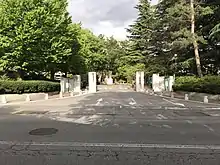
Shinshu University (信州大学, Shinshū daigaku), abbreviated to Shindai (信大), is a Japanese national university located in Matsumoto, Nagano Prefecture, Japan. As the only university in Japan bearing the name of a former Japanese province, it bears the name "Shinshu" (alternative name for Shinano Province), and is firmly rooted in the many regions of Nagano Prefecture.[1] It was the 18th ranked higher education institution in Japan.[2]
The University has several campuses; Matsumoto, Nagano, Ueda and Minami-Minowa. Nagano Prefecture is located in the center of Japan, a region blessed with traditional culture that is kept alive at many places throughout the prefecture such as Zenkoji, Matsumoto Castle, Ueda Castle.[3]
The school was founded in 1873 and it was established as a university in 1949, at which time the following institutions were subsumed into it; Nagano Normal School (established in 1873), Ueda Textile College (1910), Nagano Youths Normal School (1918), Matsumoto High School (1919), Nagano Technical College (1943), Matsumoto Medical College (1944), and Nagano Prefectural College of Agriculture and Forestry (1945).[1]
History
Shinshu University traces its roots back to 1873 when it was a temporary normal school. The university was chartered by the Showa government in 1949 under a new Japanese education system reforming older system, merging seven institutions of higher education within Nagano Prefecture which includes Nagano Normal School (長野師範学校, Nagano shihan gakkō) established in 1873, Ueda Textile College (上田繊維専門学校, Ueda senni semmon gakkō) established in 1910, Nagano Youths Normal School (長野青年師範学校, Nagano seinen shihan gakkō) established in 1918, Matsumoto Higher School (松本高等学校, Matsumoto kōtō gakkō) established in 1919, Nagano Technical College (長野工業専門学校, Nagano kōgyō semmon gakkō) established in 1943, Matsumoto Medical College (松本医科大学, Matsumoto ika daigaku) established in 1944, and Nagano Prefectural College of Agriculture and Forestry (長野県立農林専門学校, Nagano kenritsu nōrin semmon gakkō) established in 1945.[1] In 2004 Shinshu University became a National University Corporation under the National University Corporation Act.

Academics
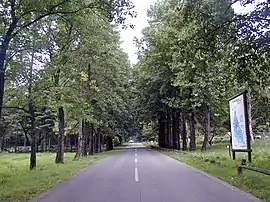
Shinshu University is a comprehensive national university having 8 faculties and 8 graduate schools. A wide range of education and research is carried out on the campuses at Matsumoto, Nagano, Ueda and Minami-Minowa with a total number of staff of 1,179 and a total number of students of about 10,970 (including about 329 foreign students).[4] Organic collaboration between the various departments is carried out utilizing the advantages of a comprehensive university, to achieve world level advanced and innovative education and research.[4]
Rankings
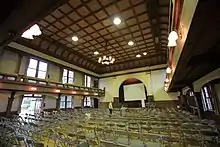
In September 2005, the university chair decided not to participate in national or international rankings in the foreseeable future, stating the administrative expenditures needed as a main reason. The small sample size used by many rankings and their methodology have also been criticised.[5] However, Shinshu University is still being featured in international rankings.

| 2015 | |
|---|---|
| U.S. News & World Report Best Global University Ranking | 708th[6] |
| Times Higher Education World University Rankings | 801–1000th[7] |
| QS World University Rankings | 801–1000th[8] |
| Year | Citations per Faculty (national) |
|---|---|
| 2015[9] | 33rd |
Administrative structure
The School of General Education The mission of the School of General Education, is to cooperate closely with the five faculties concerned with teaching (Faculty of Arts, Faculty of Science, Faculty of Engineering, Faculty of Agriculture, and Faculty of Textile Science and Technology) to make individuals acquire high professional skills based on the basic university policies for education. Furthermore, it aims to promote the educational research development and manage its plan comprehensively based on the university wide common perspective.[10]
The Faculty of Textile Science and Technology
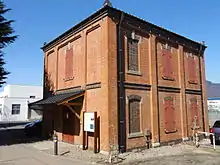
The Faculty of Textile Science and Technology is the only faculty in Japan with "Textile" in its name. It is recognized as an international research center in fiber engineering, and in 2010 celebrated the centenary of its establishment. It is ranked 35th in the sub-category "Textiles" in the international Science Citations Index . It is also ranked 50th in the "composites" sub-category. In 2012 they joined the Association of Universities for Textiles (AUTEX) based in Europe, to vitalize international exchange and collaboration.[11]
Faculties[12]
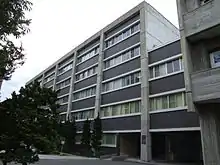
- Arts
- School of Medicine
- Engineering
- Science
- Agriculture
- Economics
- Education
- Textile Science and Technology
Graduate Schools[13]
The Shinshu University Graduate School is unique in that it offers interdisciplinary research courses that capitalize on the overall strengths of the university. Such courses allow students to explore issues such as fundamental philosophy, practical engineering, medicine, and law to contribute to the harmonious coexistence of nature and human society.
- Division of Arts
- Division of Education
- Division of Industrial and Social Studies
- Graduate School of Science and Technology
- Interdisciplinary Graduate School of Science and Technology
- Division of Agriculture
- Graduate School of Medicine
- School of Law
List of facilities and associated institutes

Interdisciplinary Cluster for Cutting Edge Research(ICCER), a World-class International Research Center has been established bringing together research resources in 5 research areas:
- Institute of Carbon Science and Technology[15]
- Center for Energy and Environmental Science
To propose new dimensional solutions for environmental and energy materials research[15]
- Institute for Fiber Engineering
research continues to innovate textiles[15]
- Institute of Mountain Science
Research into Mountain Science in Japan, Asia, and on a Global Scale[15]
- Institute for Biomedical Sciences
To contribute to the ultra-aged society by original research in biological sciences and medical research, with the aim of sustainable development[15]
In these research institutes, the education and research areas that need to be continued into the future and that can be undertaken as fusion and collaborative education and research have been selected in accordance with the characteristics of Shinshu University. In these research clusters, by developing the environment with an emphasis on research, inviting prominent external researchers, and introducing new human resource development systems to cultivate young researchers into prominent researchers, it is considered that the next generation of outstanding researchers will be nurtured, while maintaining our position as a center of excellence.[15]
University Library consists of the libraries found in each of the five campuses within Nagano Prefecture as follows: Central Library, Medical Library (Matsumoto Campus), Educational Library (Nagano-Education Campus), Engineering Library (Nagano-Engineering Campus), Agricultural Library (Ina Campus), Textile Science and Technology Library (Ueda Campus). Each library has its unique specialty and having mutual linkage. User can ask materials in a library in other campus to be sent to his nearest campus for use. Also, the libraries are open to the citizens, showing that the university is open to the regional community. Referencing, copying, and inquiry services are accepted. Also, it is possible to borrow the materials on the open shelves that are for check-out.
University Hospital , equipped with 707 beds and 65 clinics, is not only a general medical examination and treatment center but also a specialized hospital that conducts more advanced medical and clinical research. Furthermore, it acts as a teaching hospital that trains the next generation of healthcare professionals. Some of the hospital's most recent successes include the world's rst adult living donor liver transplant and the country's rst brain-dead donor liver transplant.[16]
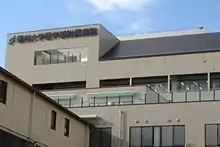
Research Center for Human and Environmental Sciences aims to not only facilitate the cooperation among the fields of gene research, animal experiments, instrumental analysis, and radioisotope application to support the research which need higher techniques with safety and efficiency but also cultivate individuals with the skills necessary to conduct research in all these fields.
Cooperative Research Center aims to not only contribute to technological development and technical training in local society but also stimulate research and education within Shinshu University through cooperative research between members of various university departments and those in the industry.
Satellite Venture Business Laboratory (SVBL) aims to promote creative research and development that can form the basis of a venture business and foster talented individuals who have advanced technical occupational abilities.
Center for Shinshu Medical Innovation of Regional Technology (CSMIT) aims to leverage and develop research seeds and technical seeds of Shinshu University etc. for the medical fields to enhance the regional medical industry dramatically. The industry, academic, and governmental organizations collaborate tightly to work on research development, commercialization, and talent cultivation.
Fiber Innovation Incubator (Fii) has a pilot line capable of research and development ranging from production of practical prototype products and analysis and evaluation, using the most advanced fiber engineering equipment. It also functions as a link with overseas universities and a hub for international information.
Shinshu Incubation Center for Medical Device and Functional Food Development is located on Shinshu University Matsumoto Campus, and has more than 50 types of analytical equipment, to stimulate local innovation. Active support is provided to accelerate joint industrial-academic-government research by local companies in the medical field.
Innovation Research and Support Center aims to not only conduct innovative research within and outside the university but also enhance association with industry, academia, and the government in cooperation with the Japanese Organizations for Small & Medium Enterprises and the prefectural Tourism and Industry Organizations.
Research Center for Higher Education aims to not only support the construction of a systematic course of study at Shinshu University but also promotes the research and development of strategic methods that assure the quality of education.
Shinshu Advanced Science and Technology Center (SASTec) provides space for technical development and collaborative research, etc., between academic staff of the Faculty of Engineering and private companies, with the objective of creation of biomass and food related industries, advanced new materials, IT and embedded devices industries, etc., as a prototype development factory that will contribute to the vitalization of local industries.
Notable people
Professor
- Akira Ikegami, a visiting professor and a journalist.
- Morinobu Endo, a chemist in the field of carbon nanotubes.
- Pulickel Ajayan, an nanotechnologist.
- Mildred Dresselhaus, a physicist.
- Gordon Wallace, a scientist in the field of electromaterials.
- Shuji Nakamura, a visiting professor and one of the 2014 Nobel Prize in Physics for inventing the blue LED.
Alumni
- Naoki Inose, Governor of Tokyo, a journalist.
- Gorō Miyazaki, a film director at Studio Ghibli, and the son of Hayao Miyazaki.
- Morinobu Endo, a chemist in the field of carbon nanotubes.
- Mitsu Shimojo, Parliamentary Vice-Minister of Defense.
- Kei Kumai, a film director.
- Kyoko Ishida, Olympic medalists in volleyball
- Sohei Miyashita, Head of the Japan Defense Agency and the Environmental Agency.
- Koji Kobayashi, a computer scientist.
- Morio Kita, a novelist, essayist.
- Shinroku Momose, an aircraft/automotive engineer.
- Mizuho Ōta, a poet.
- Kiyoshige Koyama, a composer for orchestras.
- Takahisa Oguchi, a luger.
- Mitsuko Shiga, a poet.
- Shinichi Fukushima, a racing cyclist.
Alumni of attached schools
- Naoki Inose, Governor of Tokyo, a journalist.
- Yasuo Tanaka, Governor of Nagano Prefecture
- Takashi Yamamoto, a pianist.
- Masachi Osawa, a sociologist.
- Haruyo Ichikawa, a film actress and singer.
Full list can be found in the Japanese Wikipedia article: List of Shinshu University people (in Japanese)
References
- 1 2 3 "History of Shinshu University". Shinshu University.
- ↑ U.S. News & World Report Best Global University Ranking (2015)
- ↑ "Campuses". Shinshu University.
- 1 2 "Highlights". Shinshu University.
- ↑ "Entrance ceremony President Greetings". Atsushi Komiyama. 21 September 2005. Retrieved 7 April 2007.
- ↑ U.S. News & World Report Best Global Universities Rankings, 2019
- ↑ The Times Higher Education World University Rankings 2019,2015
- ↑ QS World University Rankings 2014/15,2015
- ↑ QS World University Rankings 2015 Results Quacquarelli Symonds,2015
- ↑ "School of General Education". Shinshu University.
- ↑ "Faculty of Textile Science and Technology". Shinshu University.
- ↑ "Undergraduate". Shinshu University.
- ↑ "Graduate School". Shinshu University.
- ↑ "Organization". Shinshu University.
- 1 2 3 4 5 6 "Interdisciplinary Cluster for Cutting Edge Research". Shinshu University.
- ↑ "Hospital". Shinshu University.